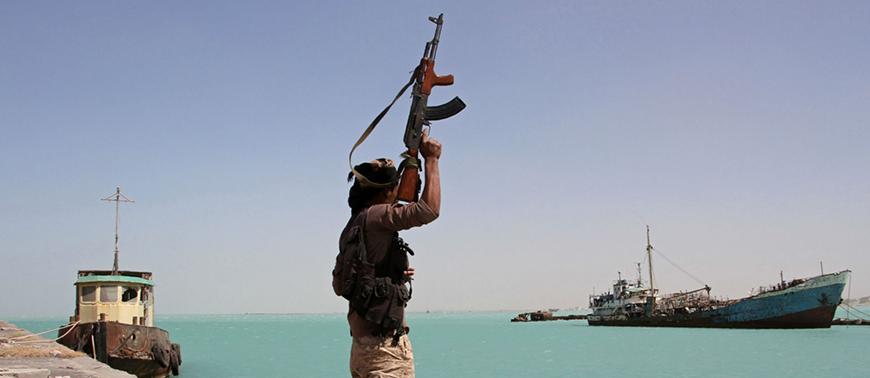
Published: 2024-01-27 by, News Team in the Business & Finance news category
Yemeni Rebel Attacks Spark Global Economic Crisis, Arctic Route Emerges
Yemeni Houthi Rebel Attacks Paralyze Red Sea Trade, Triggering Global Economic Bottleneck
The Red Sea, once a bustling maritime highway facilitating international trade between Asia and Europe, has fallen victim to a series of devastating assaults by Yemeni Houthi rebels. These relentless attacks have sent shockwaves through the global economy, disrupting the flow of goods and plunging world trade into turmoil. Between November and December 2023, the number of containers traversing the Red Sea plummeted by a staggering 60%, as merchant vessels, navigating the treacherous waters, rerouted their journeys around the Cape of Good Hope, at the southern tip of Africa.
The decision to circumvent the Red Sea and opt for the longer Cape route has not been without consequences. While this detour ensures the safety of goods in transit, it comes at a significant cost—adding at least ten days of sailing time to each voyage. Consequently, freight prices have skyrocketed, and production processes worldwide have been marred by costly delays. The region's strategic significance as a vital artery for global trade has been underscored once again, reminiscent of the Suez Canal crisis in 2021, when the Ever Given container ship ran aground, blocking the waterway for six days and disrupting billions of dollars' worth of commerce.
Yet, amidst the chaos and economic upheaval, a potential alternative emerges—the Northern Sea Route. Stretching from the Barents Sea near Russia's border with Norway to the Bering Strait between Siberia and Alaska, this Arctic passage offers a promising solution, especially if global warming trends persist as predicted. However, the viability of the Northern Sea Route hinges on overcoming numerous challenges.
Studies forecast that by 2035, summer sea ice around the Siberian coast may vanish entirely, paving the way for increased Arctic navigation. Despite the diminishing ice cover, Arctic shipping remains a formidable endeavor, characterized by slow speeds and formidable environmental obstacles. Nevertheless, the Northern Sea Route presents a compelling proposition, reducing the distance between Shanghai and Rotterdam by approximately 3,000 nautical miles compared to the Suez Canal route and 6,200 miles compared to the Cape route. The potential reduction in sailing time from 32 days via the Suez Canal to just 18 days via the Northern Sea Route could revolutionize global shipping logistics.
Furthermore, Arctic navigation boasts environmental benefits, offering the promise of reduced fuel consumption and emissions. Ships traversing the Northern Sea Route may consume up to 40% less fuel and emit up to 80% fewer pollutants compared to those navigating through the Suez Canal. However, the window for Arctic navigation remains limited, spanning only from July to November, and necessitates the assistance of nuclear-powered icebreaker escorts due to treacherous ice conditions.
Despite its potential, the Northern Sea Route faces capacity constraints and environmental risks. Mega-vessels, commonplace in international trade, are incompatible with the shallow depths of Arctic waters, restricting the route to vessels with approximately 5,000 container carrying capacity during the summer months. Additionally, the fragile Arctic ecosystem remains vulnerable to the perils of maritime traffic, with concerns over oil spills and invasive species posing significant environmental threats.
Notwithstanding these challenges, Arctic shipping traffic continues to surge, with cargo volumes on the Northern Sea Route witnessing exponential growth in recent years. Russia, the primary steward of the Arctic shipping corridor, anticipates a substantial increase in icebreaker escorts, reflecting the region's growing prominence on the global maritime stage.
While the Northern Sea Route holds immense promise as a potential alternative to traditional trade routes, its full realization hinges on overcoming logistical, environmental, and regulatory hurdles. As the world grapples with the complexities of global warming and navigates the uncharted waters of Arctic shipping, the future of international trade hangs in the balance, poised between tradition and innovation, stability and uncertainty.
Back To Main News & Articles List...
KEEP YOUR FINGER ON THE PULSE!
Experience the heartbeat of Chiswick like never before! Join our weekly Chiswick Newsletter and immerse yourself in a weekly dose of deals, happenings, exciting events, exclusive news, reviews, articles and local Chiswick updates.
SUBSCRIBE TO THE CHISWICK NEWSLETTER NOW